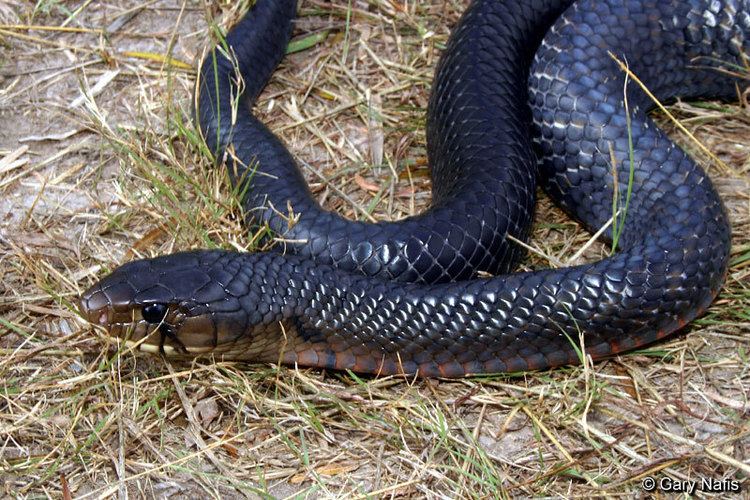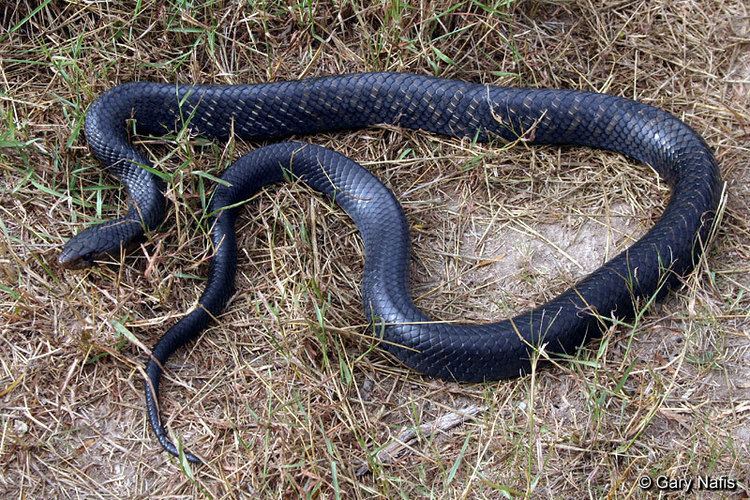Subphylum Vertebrata Suborder Serpentes Rank Subspecies | Phylum Chordata | |
 | ||
Similar Middle American, Drymarchon, Snake, Reptile, Colubridae | ||
Drymarchon melanurus erebennus, commonly known as the Texas indigo snake, is a large, nonvenomous, colubrid snake native to Texas and Mexico.
Contents

Geographic range
It is found from southern Texas south into Mexico as far as Veracruz.
Description
Texas indigo snakes are predominantly black in color, with a high sheen which gives their smooth scales a remarkable iridescent hue. Their underside is often a salmon pink color. They are large snakes, regularly attaining total lengths beyond 6 ft (1.8 m); 8 ft (2.4 m) long specimens are not unheard of.
Habitat
Texas indigo snakes prefer lightly vegetated areas not far from permanent water sources, but are also found in mesquite savannah, open grassland areas, and coastal sand dunes. They den in burrows left by other animals.
Behavior and diet

Indigo snakes are diurnal snakes, and spend most of their time actively hiding. They will consume almost anything they can overpower and swallow, including mammals, birds, lizards, frogs, turtles, eggs, and even other snakes, including rattlesnakes. Because of its aggressive attacks on rattlesnakes, many farmers in southern Texas consider it a useful ally. Hence the adage, "If it's an indigo, let it go." It is not a typically aggressive snake, but may bite or release a foul smelling musk from its cloaca if handled or harassed. Like many colubrid snakes, it will often shake its tail as a warning - even though it does not possess a rattle.
Reproduction
Breeding takes place, generally yearly, in the winter. Clutches that average 10-12 eggs are laid in the spring, and hatch around 80 days later. Hatchlings can be up to 26 in (66 cm) long. Maturity is reached in 2-3 years.
Conservation
The Texas Indigo Snake is listed as a threatened species by the state of Texas. Its primary threat is from habitat loss due to human development. Each snake requires a large home range to forage, and urban sprawl is shrinking their usable habitat. Roads bisect their territory, and many snakes each year are run over by cars.
